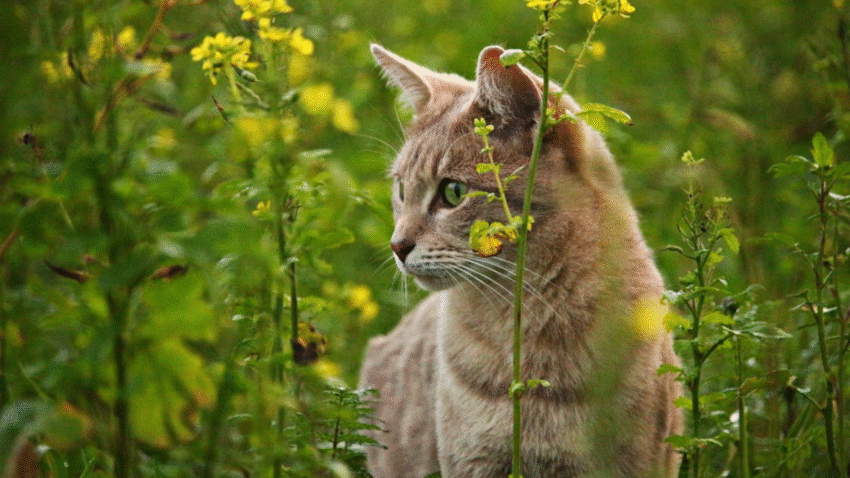Introduction
Is your indoor cat sleeping too much or gaining weight? Wondering how to keep your indoor cat active and fit? Keeping a house cat physically and mentally stimulated is essential for their health, happiness, and longevity. In this article, you’ll learn practical, fun, and easy ways to help your cat stay in shape—even without outdoor access.
Why Exercise Matters for Indoor Cats
Unlike outdoor cats, indoor cats don’t have the natural stimuli of chasing prey, climbing trees, or exploring large spaces. This lack of movement can lead to:
- Obesity
- Boredom or depression
- Destructive behavior
- Joint or muscle stiffness
Staying active is essential for:
- Healthy weight management
- Strong muscles and bones
- Better digestion and circulation
- Reduced risk of diabetes and arthritis
- Mental stimulation and lower stress
An active cat is a healthier, happier, and more well-behaved cat.
Step-by-Step Guide to Keeping Your Indoor Cat Fit
Step 1: Set a Playtime Routine
- Aim for two 10–15 minute sessions of play every day.
- Use toys that mimic hunting behaviors: think feathers, strings, and crinkly textures.
- Let your cat “win” by catching the toy occasionally to keep them engaged.
Suggested toys:
- Wand toys (feathers, strings)
- Laser pointers (with caution—end with a physical toy to avoid frustration)
- Small plush mice or balls
Step 2: Rotate and Refresh Toys
- Cats get bored with the same toys. Keep 3–5 out at a time and switch weekly.
- Introduce new textures, smells, and sounds to keep interest high.
- Sprinkle a little catnip on old toys to renew excitement.
Tip: DIY toys like paper balls, cardboard boxes, and toilet paper rolls can work just as well as store-bought toys.
Step 3: Create Vertical Space
- Install cat trees, wall shelves, or window perches to encourage climbing.
- Climbing builds leg strength and gives cats a sense of territory.
- Place a perch near a window for bird watching, which provides hours of mental stimulation.
Step 4: Make Mealtime More Active
- Use puzzle feeders or treat-dispensing toys to make your cat “hunt” for food.
- Scatter kibble across different locations in the home to encourage movement.
- Split meals into smaller, more frequent servings so your cat is more active throughout the day.
Step 5: Encourage Independent Activity
- Place toys in different corners of your home to encourage exploration.
- Use motion-activated or battery-powered toys for solo play when you’re not around.
- Consider an exercise wheel if your cat is especially energetic or young.
Step 6: Bond with Interactive Play
- Spend time daily playing with your cat using wand toys or feather sticks.
- Move the toy like real prey—quick dashes, hiding, stopping suddenly.
- End the session with a small treat to simulate a successful “hunt.”
Common Mistakes to Avoid
1. Assuming Cats Exercise Themselves
Indoor cats need structured play and environmental enrichment. Don’t expect them to stay fit without your help.
2. Leaving All Toys Out All the Time
When toys are always available, they lose their novelty. Rotate toys regularly to keep your cat interested.
3. Overfeeding Without Exercise
Free-feeding without activity leads to weight gain. Balance meals with daily playtime.
4. Using Unsafe Toys
Avoid toys with loose strings, small parts, or sharp edges. Always supervise play with wand or string-based toys.
5. Skipping Play on Busy Days
Even a few minutes of play is better than nothing. Set a reminder if needed to keep your routine consistent.
Extra Tips & Recommendations
- Try Cat TV: YouTube has many “cat TV” videos with birds, fish, or nature sounds to engage your cat visually.
- Use Treat Mazes: Great for mental stimulation and slowing down treat intake.
- Schedule Vet Checkups: If your cat is extremely inactive or gains weight quickly, rule out medical issues like arthritis or thyroid problems.
For more indoor cat wellness ideas, check out our guide on [How to Safely Use Grooming Tools on Your Cat].
Conclusion
Keeping your indoor cat active and fit doesn’t require a huge space—just consistency, creativity, and a little time each day. By building a play routine, using vertical space, and turning mealtime into a game, you’ll keep your cat healthy in both body and mind. A fit cat is a happy cat—and a joy to live with!
